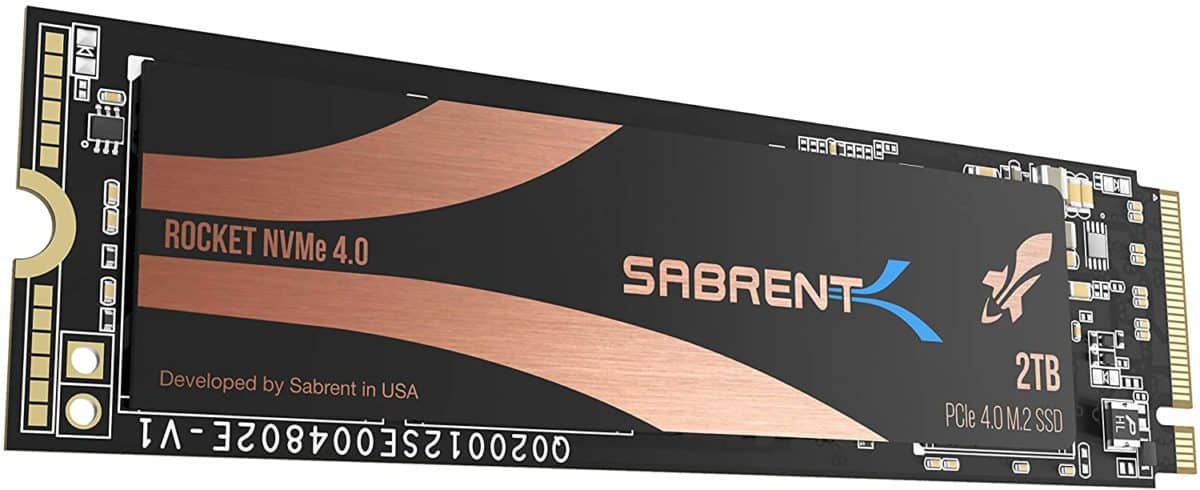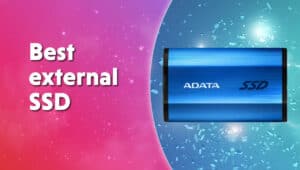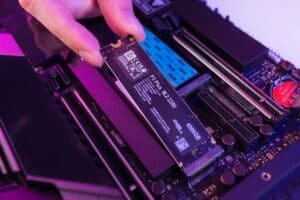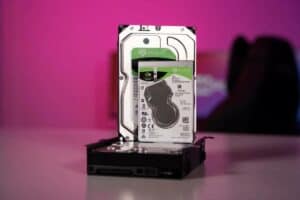Best SSD for gaming in 2024
Choosing the best SSD can be difficult, however, with this comprehensive guide, you'll be equipped with the knowledge to make the most informed decision on your next SSD purchase

WePC is reader-supported. When you buy through links on our site, we may earn an affiliate commission. Prices subject to change. Learn more
As you’re looking to improve the speed of your storage, one of the main ways to do so is to include an SSD. So looking at the best SSD for gaming in 2024 is the way to go. Using one of those will certainly speed up your loading speeds especially when it comes to upgrading over a hard drive spinning disk.
SSDs, not to be confused with some of the best external SSDs, can increase your storage but also drastically cut down your loading and program launch times when it comes to gaming. And fairly recently, they gained even more popularity as there are now some excellent SSDs for PS5 which act similarly to the SSD solution for Xbox Series X (the Seagate expansion card).
So if you’re looking to optimize your storage and get the most out of your PC or console – you’re in the right place. Let’s dive and take a look at what we think are some of the best SSDs for gaming out there today.
Today’s best SSD deals
- Crucial P310 4TB PCIe Gen4 2280 NVMe M.2 SSD –
- Seagate Storage Expansion Card 2TB Solid State Drive – Save 44% NOW!
- SAMSUNG T7 2TB SSD – Save 48% NOW!
- SAMSUNG T7 Portable SSD 2TB – SAVE 48%
- ASUS TUF Gaming A1 External M.2 NVMe SATA PCIe SSD Enclosure – Save 33% NOW!
- Crucial BX500 1TB 3D NAND SATA 2.5-Inch Internal SSD – Save 41% NOW!
- SAMSUNG 870 QVO SATA III SSD 8TB 2.5 – Save 35% NOW!
- SAMSUNG 990 PRO SSD 4TB PCIe 4.0 M.2 2280 – Save 42% NOW!
- SAMSUNG 980 PRO SSD 2TB PCIe NVMe Gen 4 – Save 41% NOW!
- Corsair MP600 CORE Mini 2TB M.2 NVMe PCIe x4 Gen4 2 SSD – Save 42% NOW!
Best SSD for gaming in 2024: reviews
SAMSUNG 990 PRO
SAMSUNG 990 PRO w/ Heatsink SSD 2TB

Read/write
7,450/6,900 MB/s sequential
Capacity
2TB
Interface
PCIe Gen 4.0 x4
- Maxes out PCIe 4 x4 speeds
- Great thermal cooling solution
- Great power efficiency
- Still on Gen 4 even with 5 available
The Samsung 990 Pro is the best on offer right now. With plenty of power and speed behind it, there’s nothing it can’t do. It comes with a pre-installed heatsink, or without if you prefer, but that ensures if you don’t have one on your motherboard then it allows your SSD to keep running at its best for a longer period of time.
There is a variety of capacities to choose from, we go for 2TB as it comes in with a good price for how much you do get. All of these combine to provide a great gaming option for your loading times and plenty of storage capacity. As you could certainly get away with just one device. Of course, it is also compatible with the PlayStation 5 and direct storage for a great round usage of the SSD.
WD Black SN750

Crucial P3 500GB

Interface
PCIe 3.0 x4 NVMe
Read/Write Speed
Up to 3,500 MB/s / Up to 3,000 MB/s
Capacity
500GB
- Great value option for NVMe storage
- Lacking a cache that may bottleneck under prolonged usage
- Still on PCIe 3 that may limit its performance
If you’re going for a budget M.2 NVMe Crucial offers just that. You might lose out on some of the comforts that premium options provide, but it certainly brings great new value to your build and a lot simpler and easier installation when it comes to building out your PC or upgrading your storage.
It does utilize the older PCIe 3.0 standard so it can’t reach the same speeds as higher ones, but it’s not slow at all either way. That may also come from the lack of cache it has on board. That means there’s no buffer on the SSD and means it can bottleneck when you’re transferring files and trying to do a lot on it at once. But for a great experience in general it provides a lot for a great value.
Crucial MX500

Crucial MX500 500GB
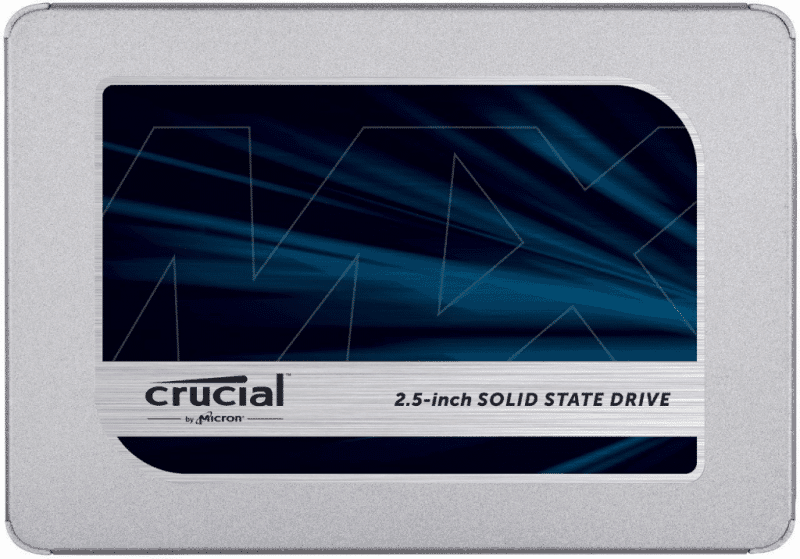
Read/Write
560/ 510MB/s
Capacity
500GB
Interface
SATA 2.5
Dimensions
4.06 x 0.28 x 2.76 inches
- Very affordable
- Good starter size SSD
- SATA
- Much slower than NVME
In case you forgot, there are SATA SSDs out there, unfortunately, however, only one feature in our best-of list and that’s purely down to NVME PCIe SSDs becoming much more affordable. The difference in speed between the 2 is pretty exponential with the NVME boasting over 6x the speed of a SATA SSD. This being said, there is still a market for SATA SSD and that market is predominantly people on a budget.
The Crucial MX500 is way slower than everything else on the list, but in the same breath, it’s much cheaper. We’d always recommend going for an NVME-type SSD but if you can’t quite stomach the cost, 500GB of SATA is a great place to start. Just be aware, if you only have this as your primary and backup hard drive, keep in mind that it will fill up quickly… especially with games and 4k media being much more space-demanding.
Things to consider
PC components are considered an investment, so regardless of what the piece of hardware is, there are always going to be a few key things to consider before making that final purchase. In this section, we are going to go over why you should buy an SSD, talk you through storage capacity, and briefly explain the different interfaces, to ensure you walk away with the right product for your individual needs.
Storage capacity
Due to their faster speeds and more expensive manufacturing methods, SSDs are much more expensive per gigabyte than HDDs. Because of this, most enthusiasts prefer to have an SSD in their system alongside an HDD, so they aren’t losing out on either performance or storage space. When selecting your SSD, you’ll want to figure out how much of it you actually intend to use. If you already have an HDD to use alongside it, use the HDD to store most of your media and games.
Your operating system and your most-played games should be stored on your SSD. Modern games come in at anywhere from 10-50GB, so keep this in mind when comparing the SSDs that we’ve provided. If you aren’t going to supplement your SSD with an HDD, you’ll want to spend more on your storage to compensate. You should also get used to managing your existing storage space more carefully.
Interface
There are three main interfaces for SSDs: SATA 3, M.2, and PCI-E.
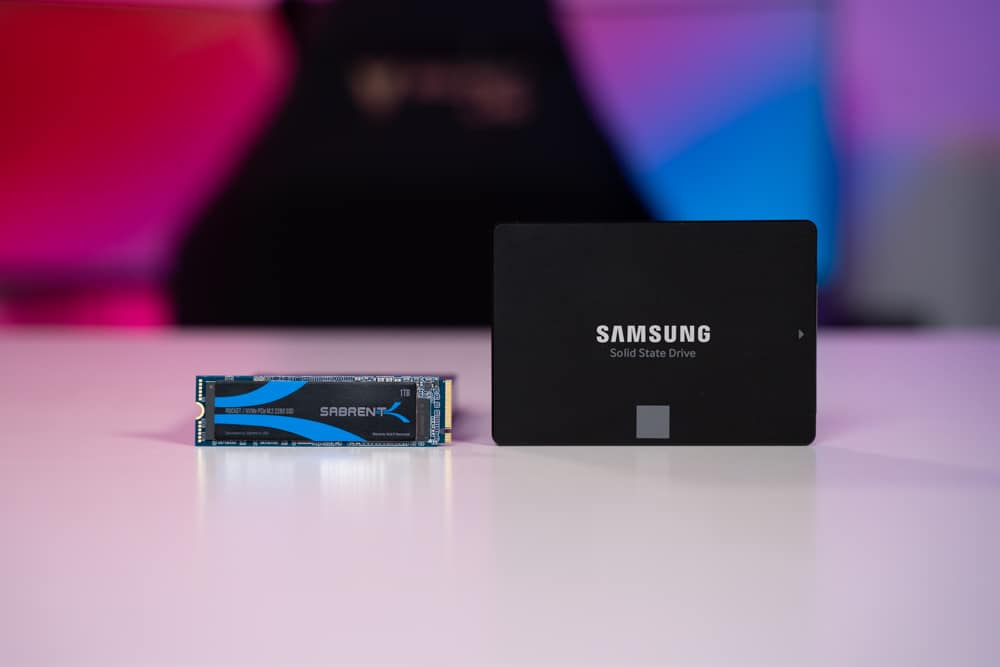
SATA 3 is an interface shared by standard HDDs and has limited speeds when compared to M.2 or PCIe. However, even with the SATA speed penalty, SSDS go far beyond an HDD’s speed capabilities.
M.2 is both an interface and a form factor, designed for tiny SSDs and tiny slots for them to plug into. These slots can run a SATA or PCIe signal for the same or better performance, all while saving significantly on space for installation.
The PCI-E SSD is mounted in the same way as a desktop GPU: in a PCI-E slot. PCI-E SSDs have world-class performance and are most often used in enterprise environments, thanks to the memory bandwidth and speed offered by a PCI-E slot over alternatives.
| SATA 3 | M.2 | PCIe | |
|---|---|---|---|
| Speed | 6 GB/s | 7.8 (PCIe 4 x4)/15.75 (PCIe 5 x4) GB/s | 7.8 (PCIe 4 x4)/15.75 (PCIe 5 x4) GB/s |
Why buy an SSD for gaming?
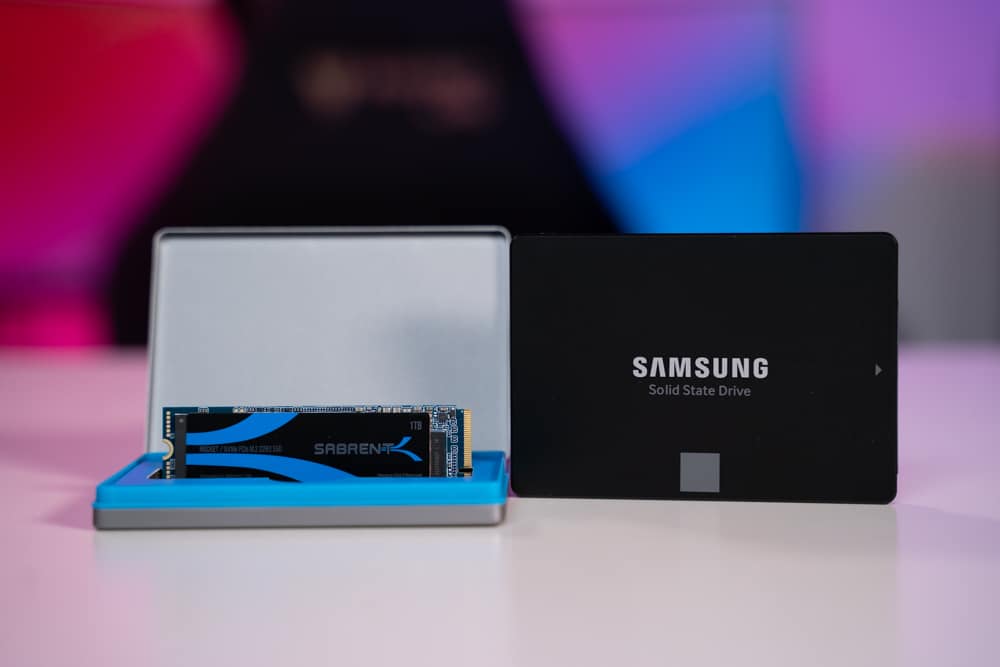
Roundup aside, some of you may be left wondering why to use an SSD for gaming, or what performance benefits it actually offers. We’re going to hop into that now. If you’re buying an SSD expecting it to boost your in-game FPS, it won’t. Unless the game has issues loading in assets during gameplay that hurt its FPS, your performance won’t see a boost from investing in an SSD.
Where an SSD will make a difference on the gaming front is in loading times. Loading times, especially loading screens between maps, will plummet significantly on an SSD versus any hard drive. SSDs will also improve your experience outside of games. Transferring large games or large files will become much quicker on an SSD when compared to an HDD.
Additionally, if you install your OS and your programs on your SSD, everything will run much faster. Even on systems with weak CPUs, the drive is the main bottleneck behind operating system boot times and program launch times. This is why many people buy SSDs to revive old computers. It’s one of the best user-experience upgrades that a user can buy for their system.
SSDs, as a whole, do come with one key downside: price-per-GB. Because of this, people generally supplement an SSD with a larger, cheaper HDD.
Final Word
There we have it, the best SSDs for gaming all in one place. Now, this may seem a little M.2 heavy but they are the fastest and require nothing more than being plugged in, with no cable management required. There is still plenty of use for the 2,5″ SSDs but they just lose out across the board.
In truth, a SATA SSD over a PCI-E SSD won’t result in much of a difference in gaming. However what you will see is huge improvements in overall, general system usage. We can not recommend an SSD enough, it is truly one of the greatest system improvements you can buy.
Best SSD for gaming FAQs
Which brand SSD is best?
There are plenty of SSD brands to choose from. However, one stands out as a fan favorite and the best choice is Samsung. Its Evo range of NVMe’s is a great pick for the range of options.
What are the 3 types of SSDs?
There are three main types of SSDs to consider. One of which is a SATA SSD that connects to your motherboard with a SATA cable and is mounted elsewhere in the PC. Whilst the other two mount to the motherboard directly, which are NVMe and SATA M.2s. Although both connect to the M.2 mount, they don’t have the same speed. As the SATA one will still use the older, slower controller as the SATA SSD. So NVMe will excel in terms of speed but at a price.


